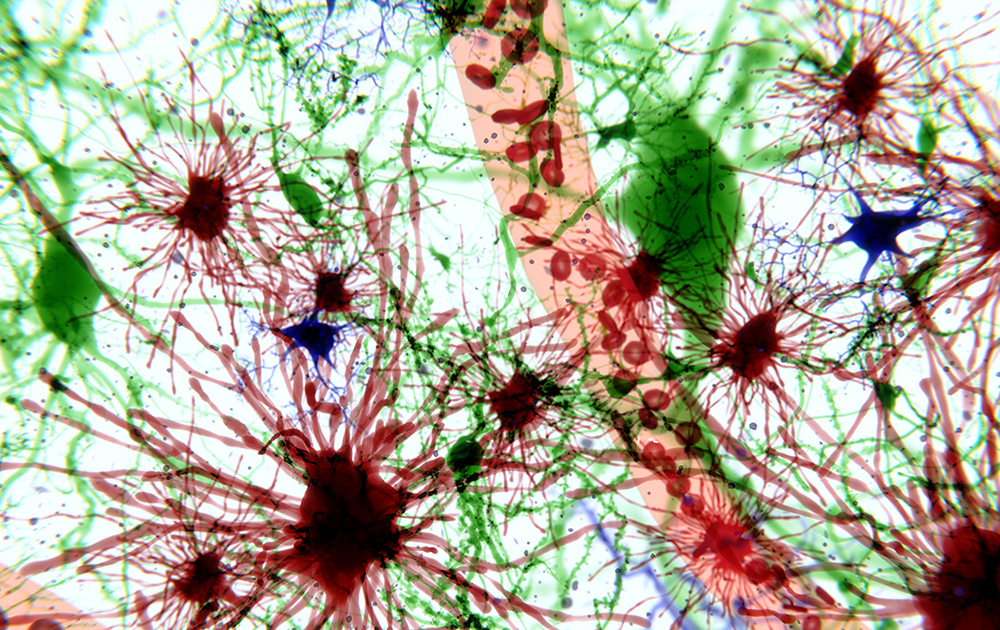The link between Alzheimer’s disease and amyloid plaques is well documented, with innumerable studies exploring techniques and therapies to inhibit plaque formation, preventing development or progression of the disease. But what about treatments for those already experiencing cognitive decline from Alzheimer’s with plaques already present?
This is the question explored by a team of researchers at Baylor College of Medicine, led by Benjamin Deneen, PhD, professor at Baylor, director of Baylor’s Center for Cancer Neuroscience, and a principal investigator at the Jan and Dan Duncan Neurological Research Institute at Texas Children’s Hospital.
Their research, published in Nature Neuroscience, explores the role that astrocytes, star-shaped glial cells, play in the removal of amyloid plaques.
“Astrocytes perform diverse tasks that are essential for normal brain function, including facilitating brain communications and memory storage,” said first author Dong-Joo Choi, PhD, who conducted this work at Baylor, but is currently an assistant professor at Texas Health Science Center at Houston.
“As the brain ages, astrocytes show profound functional alterations; however, the role these alterations play in aging and neurodegeneration is not yet understood.”
A key protein regulating astrocyte function during the aging process, and thus its ability to remove amyloid plaques, is Sox9. The team decided to modify the levels of Sox9 to identify the interplay between astrocyte aging and Alzheimer’s disease.
“We manipulated the expression of the Sox9 gene to assess its role in maintaining astrocyte function in the aging brain and in Alzheimer’s disease models,” said Deneen.
Using a mouse model specifically chosen for its cognitive impairment, the team designed their experiments to evaluate the long-term cognitive abilities in the mice with overexpression of Sox9 or elimination of the gene.
“We believe these models are more relevant to what we see in many patients with Alzheimer’s disease symptoms than other models in which these types of experiments are conducted before the plaques form,” explained Choi.
Individuals who lacked Sox9 and those with overexpression were assessed over the course of six months. Evaluations included testing the animals’ ability to recognize objects or places. Following behavioral analysis, the researchers measured plaque deposition in the brains.
The difference between the two groups was striking. Sox9 knockout mice both displayed cognitive decline and had accelerated plaque formation, along with decreased clearance in amyloid deposits and reduced astrocyte complexity. Conversely, mice with an overexpression of Sox9 had preserved cognitive function, reduced plaques, and increased astrocyte activity and complexity in the brain.
“We found that increasing Sox9 expression triggered astrocytes to ingest more amyloid plaques, clearing them from the brain like a vacuum cleaner,” Deneen said.
This work suggests an alternative route for therapies that address more than the direct impact on neurons but work with the accessory neuronal tissue, including glial cells like astrocytes.
“Most current treatments focus on neurons or try to prevent the formation of amyloid plaques. This study suggests that enhancing astrocytes’ natural ability to clean up could be just as important,” shared Deneen.
While this work shows promise, more research is needed into the role of Sox9 in the brains of humans to evaluate the potential for utilizing astrocytes to fight neurodegenerative diseases, including Alzheimer’s.

